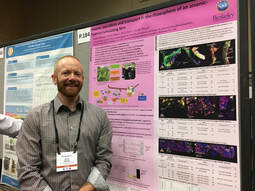 Having a great time at the Rhizosphere 5 conference in Saskatoon, Canada! It's amazing to join this scientific community, connect with so many great researchers, and hear keynotes from people who's work I've been following for years. Plus, there is plenty of fun to be had, including the graduate student social, touring the Canadian Light Source, and dancing at the Gala Dinner Tuesday! I love a dance floor full of scientists. I presented a poster on arsenic mobilization in the P. vittata rhizosphere, where I used a soil column study and synchrotron X-ray absorption spectroscopy to show that adding phosphorus to soil releases arsenic through ion exchange, but does not increase arsenic uptake in the fern. Instead, we see more leaching of arsenic from soil. Looking forward to the rest of the conference!
0 Comments
I drove my old truck from Oakland out I80 to El Sobrante, one of the inner ring East Bay suburbs. Not a cookie cutter suburb, it’s hilly out there, with small houses packed together on narrow roads without curbs. I saw the grassy slopes of the farm before I found the sidestreet to the farmhouse, which was just another house on the street. The house backed up on the valley and the students I was about to teach were far down in the training field, double digging and mulching to prepare their beds for production.
I was out there at the invitation of my colleague Ana Martinez to teach soil fertility to students in the Bay Area Farmer Training program operated through MESA (the Multinational Exchange for Sustainable Agriculture). The program trains 30 apprentices in intensive sustainable agriculture production while emphasizing cultural diversity and social justice. It was early in the season and the students had only just met the previous week, but already the rapport was palpable. Back in the garage for my talk, they gathered around plank tables and chatted as I pulled up my slides for the soil fertility lecture I usually give to UC Berkeley students. As I introduced the material immediately something felt off. I identified with the MESA students, because the way I learned to grow food was more akin to their program than to the university classes I was now teaching. I learned to garden through an internship at a queer intentional community in Tennessee. Many of the MESA apprentices seemed like they could have fit in out there, especially more recently since that community did some serious work addressing white supremacy and more people of color started spending time there. However, I did not start my talk off by talking about how I learned to farm. I did not talk about the similarities in either farming method or sociopolitical orientation. After asking them to define soil fertility, I just jumped right into macro and micro nutrients. The room felt flat as I talked about Leibig’s law of the minimum and other classic soil science concepts. I could feel myself falling deeper and deeper into the hole of academic jargon (which didn’t even sound that jargon-y to me – case closed!). I couldn’t figure out what to do to rescue myself other than keep going. Things came to a head with our old friend, cation exchange capacity (CEC). The idea of CEC is thrown around casually in urban agriculture but it can actually be tricky to understand. Basically, it refers to the ability of the soil to retain positively-charged nutrients (which are called cations, as in cat-ions). Understanding CEC means grasping the idea that the soil is full of charged particles that are all interacting through the old maxim, “opposites attract”, so that we have a charge balance in the soil. After patiently sitting through most of my talk, Ana and the students now really took charge (get it?), articulating the balance in a healthy soil in ways I would never have dreamed of. Eventually a student was describing the soil as a womb, and I realized I would need a whole new vocabulary and conceptual framework to successfully teach the material in this environment. Indeed, what was the point of these soil science concepts, a student asked? There are many ways to understand your soil, I said. Soil tests give you information that can help you keep your soil healthy and grow healthier plants. There are other ways to reach the same outcome, ways of understanding soil health by looking at your soil and looking at your plants. Quantitative or observational, both lead you to a positive, more informed outcome. As I left, I realized that if I want to be a bridge between academia and social justice-oriented urban agriculture, I need to remember that identity and positionality matters. We have to acknowledge who we are because that determines what information we have access to. If you are in a group underrepresented in science due to institutional biases, the science-based ways of knowing (or knowledge which requires more institutional access, like soil testing services) might not seem very relevant in comparison to observational ways of knowing (or methods requiring less institutional access, like DIY soil tests). If I’m trying to use my position (as a white trans man with access to academia) to expand access to science, both institutional and DIY, I need to acknowledge who I am and why I have access. I need to share the material in a way that actually makes it accessible, teaching not from the part of me that has access, but the part of me that knows what it is like to be different. 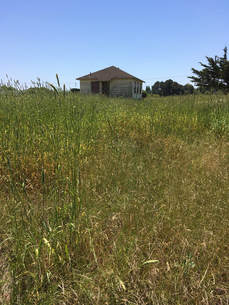 Competitive invasive Harding grass (Phalaris aquatica, to the left) crowds out native grasses (foreground, to right) at the Richmond Field Station. An old California Cap Company building connotes a settler dwelling. Competitive invasive Harding grass (Phalaris aquatica, to the left) crowds out native grasses (foreground, to right) at the Richmond Field Station. An old California Cap Company building connotes a settler dwelling. The bunchgrasses we were walking on could have been hundreds of years old. The “old growth at our feet,” these Danthonia californica plants and their neighboring species form the last remaining coastal terrace prairie on the San Francisco Bay Shore. It’s not farfetched to envision these same plants growing here before colonization. This 6 acre patch of prairie at UC Berkeley’s Richmond Field Station was undisturbed, despite being surrounded by chemical plants – acrylamide today to the west, to the east the former California Cap Company, with its legacy of mercury fulminate, and what was once Stauffer Chemical. I’m out there studying sustainable ways to clean up arsenic left in nearby soil as Stauffer chemical waste was dumped. Today we are walking around the undisturbed prairie talking about the last step of my restoration project, propagating prairie grasses from local germplasm to plant out in my field site. California native plant communities have never been far from my research. Research at my first field site, an old railroad grade in Berkeley slated to become a community orchard (but for the arsenic in the soil!) received funding from a large project that also supported the Amah Mutsun Tribe just south of here managing coastal grasslands. The Long Term Sustainability Through Place-based, Small-scale Economies project at Japan’s Research Institute for Humanity and Nature, headed by Junko Habu, a professor in the Anthropology Department here at UC Berkeley, wove together sustainability of societies ancient and modern, focusing on projects around the Pacific Rim. My project was firmly in the modern section, looking at sustainable methods to rehabilitate soils for urban food production, but our neighboring California projects worked with California Indigenous peoples, including the Amah Mutsun, to support traditional environmental resource management. Traditionally, coastal Indigenous people carefully tended the prairies and oak savannahs to increase important plant populations. As Kay Anderson describes in Tending the Wild, far from living a hardscrabble hunter-gatherer life, or living an ecological eunuch-like existence hardly impacting the earth, Indigenous people developed intimate relations with plants through generations of experimentation and observation. The coastal terrace prairie we see today thus reflects Indigenous cultures, not untouched wilderness. I was reminded of this recently when I saw Keshia Williams, a Berkeley Social Welfare lecturer, share her work to bring sustainability themes into a social welfare course. The presentation was a part of a year-long project I helped organize for Berkeley faculty to support them in bringing sustainability concepts into courses in diverse disciplines. Williams, a workshop participant, looked around her classroom to start her process, and saw who was there in the room to participate in the discussion. She saw that Native people were not there, a reflection of underrepresentation at UC Berkeley overall, where Native students make up only 1% of the student population, compared to 2% of the California population. In a calculated move, she used her grant money to pay two former students, Bonnie Lockhart, MSW and Makena Silva, MSW, both Native, to work with her to bring sustainability into her course. Lockhart and Silva centered their presentation on creating an altar in the classroom to hold space for the environment in the classroom, and simultaneously hold space for people in the environment. Items on the altar held spiritual, cultural, medicinal, and environmental significance, and the altar honored these connections that permeate the fabric of life. Plants deemed lesser in the Western conservation aesthetic, like the red and white willow used to make the baby basket on the altar, hold significance equal to grand oak trees. Back on the prairie, I felt excited about these connections as I collected seeds for Stipa pulchra (Purple Needle Grass), and also humbled, because these connections weren’t new. I thought about what I notice, and what I don’t, based on my awareness of my position as a white transman in a white supremacist culture. As my students and I figure out the best ways for us to propagate these plants, we touch on old knowledge, learned, practiced, and refined by generations of people who were then forcibly removed, killed, isolated, or assimilated, but certainly not erased. Survivors of genocide like the Amah Mutsun people today must still fulfill their obligation to the Creator, says Valentine Lopez, Amah Mutsun elder. Though they do not own land because they are not a federally recognized tribe, they access to land through the Amah Mutsun Land Trust where they use traditional ecological knowledge to restore grasslands. In a broader sense, our restoration project on the coastal terrace prairie, funded by a new Environmental Justice emphasis in Berkeley’s The Green Initiative Fund, also weaves together environmental and social sustainability. Our project supports students from underrepresented groups, myself included, in environmental science in gaining paid research, restoration, and leadership experience. Our project is short, though. Our final recommendation will be for UC Berkeley to partner with Ohlone people here in the East Bay to practice culturally appropriate restoration and decolonize this ancient prairie. Thanks to Keshia Williams for access to Tending the Wild and the Bay Nature article featuring Valentine Lopez.  Is that cake made of ferns? Is that cake made of ferns? Sometimes I see fiddleheads for sale in the grocery store. I wonder about the fiddleheads in my field of ferns, succulent and… loaded with arsenic. If somebody harvested ferns from an arsenic phytoextraction remediation project, how much fern would they have to eat to harm themselves, or somebody else? Let’s use me as an example. The lethal dose of arsenic is 0.6 mg arsenic per kilogram body weight per day. This is estimated for humans but based on rat studies, since it is illegal and highly unethical to do toxicity studies on humans. I weigh about 68 kilograms, so my lethal dose is 41 mg arsenic a day (likely 1-4 days, until I succumb to the effects). The ferns in my studies contain about 1000 mg arsenic per kilogram dried plant tissue, so I would have to eat 41 grams of dried fern. That’s well over half of one of the huge ferns in my field study! I don’t think I could eat that much lettuce or collards, let along toxic plant tissue, in one day, let alone days on end. It would be very hard for somebody to acutely poison themselves (or somebody else) eating P. vittata from a phytoextraction project. What a relief! However, say a 1,200 lb (545 kg) cow developed a taste for ferns. Perhaps the gate was left open and the local cow herd wandered in (urban agriculture, anyone?). If that cow grazed to its hearts content in a phytoextraction field, it would consume the equivalent of 24 lbs (11 kg) per day of dried plant tissue. (That’s the amount of dry matter cows consume as fodder, according to the University of Nebraska.) If they were eating the ferns with 1000 mg arsenic/dry kilogram, they would quickly consume the lethal dose of arsenic, which would be 327 mg per day. In fact, in one day they would consume about three times that much! Even the common bracken fern is poisonous to cattle, however. Pteridium aquilinum, common in the western US, contains toxins which can kill cattle and horses and harm goats after several weeks of grazing or eating infested hay. A chemical called ptaquiloside causes bleeding and damages bone marrow in cattle, while bracken fern causes thiamin deficiency in horses. Bracken fern could be carcinogenic, and milk from cows grazing bracken fern could be hazardous to humans. Fortunately, it seems cattle or horses avoid grazing on ferns if given enough other options, regardless of how much arsenic they contain. Deer also dislike ferns, and rabbits will avoid ferns except maidenhair. Our fern field is safe from these critters, who in turn are safe from arsenic poisoning! 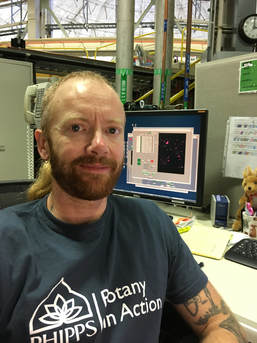 Collecting data on the chemical form of arsenic in the root zone of the arsenic hyper accumulating fern, Pteris vitiate, at the Advance Light Source (Lawrence Berkeley Laboratory, Berkeley, CA). Collecting data on the chemical form of arsenic in the root zone of the arsenic hyper accumulating fern, Pteris vitiate, at the Advance Light Source (Lawrence Berkeley Laboratory, Berkeley, CA). 2017 was an exciting year in the field, lab, and beyond! As the calendar turns I like to look back on the year’s research and outreach accomplishments. Learning new methods: This year I learned a lot of new methods to analyze plant tissue and soil samples for arsenic, most notably how to use synchrotron radiation to understand the chemical form of arsenic in my samples. I logged about 50 hours on the beam line at two facilities. I also learned how to use X-rays in a more portable way, using an X-ray fluorescence (XRF) instrument to analyze contaminant concentrations during real-time sampling in the field. I learned this method while volunteering with EPA personnel at an oil refinery superfund site in Bristow, OK, where I found that lead is a major contaminant at refinery sites, in addition to petrochemicals. I also collaborated with EPA and other agency personnel on a soil sampling methods project here in Richmond, trying to figure out the best way to accurately determine what’s really in the soil. With only a few grams of soil ultimately analyzed in the lab, it makes a big difference how samples are collected from a large lot! 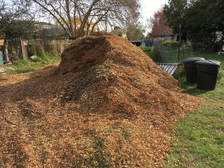 After 4 years growing ferns in our arsenic phytoextraction study at our Berkeley site, we removed a lot of arsenic. The soil is still contaminated, however, so I covered the lot with mulch before leaving. After 4 years growing ferns in our arsenic phytoextraction study at our Berkeley site, we removed a lot of arsenic. The soil is still contaminated, however, so I covered the lot with mulch before leaving. Working in the field: After 4 long, fruitful years working at my Berkeley field site, I completed work there. I took down our hoophouse and gave the materials to the Gill Tract Farm, a UC-community collaboration, and said goodbye to the neighbors. I also completed the final fern sampling at my other field study, a 1 year project in Richmond, CA. One year feels short compared to 4, and while part of me wanted to keep the ferns growing, I’m looking forward to moving from fern tending to data analysis. 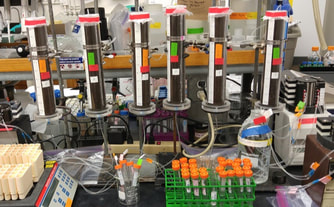 We pack acrylic columns with contaminated soil and run water through, to see how much arsenic leaches from the soil. We pack acrylic columns with contaminated soil and run water through, to see how much arsenic leaches from the soil. Meanwhile, back in the lab: Soil column studies help us understand what happens in the plant root zone. I completed baseline work looking at arsenic leaching from soils without the arsenic hyperaccumulating fern (Pteris vittata), and started soil columns studies with the fern planted in the contaminated soil. We hope to see less leaching when the fern is present, but we might be surprised! It took a long time to find suitable soil at my field site to excavate for these columns, further ingraining the lesson that soil contamination is heterogeneous. Move over 2 feet and voila! Arsenic concentrations are very, very different. 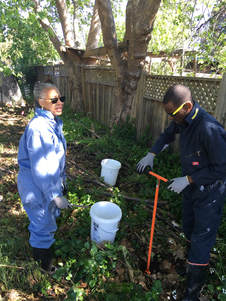 Berkeley Community Gardening Collaborative Project Director Corinne Haskins (left), and Berkeley Technology Academy teacher William Tinson (right) sample soil at the railroad right of way. Berkeley Community Gardening Collaborative Project Director Corinne Haskins (left), and Berkeley Technology Academy teacher William Tinson (right) sample soil at the railroad right of way. Staying true to urban agriculture roots: Even though my work at the Berkeley field site is officially over, I won’t be away for long! I’ll just move to the next adjacent lot on this old railroad right of way, working with high school students, UC undergraduate mentors, and the Berkeley Community Gardening Collaborative to test soil for contaminants. This is the next step in moving this 6-lot-long brownfield towards urban agriculture use. I also continued work this past year with Urban Tilth, helping them test and rehabilitate the soil at their North Richmond Farm. In the coming year my collaborator Joshua Arnold and I will work with them on a project using the forage radish to “organically” punch through compacted soil and add organic matter in daikon-sized chunks (mmm, delicious!). Josh and I were honored to receive the Chancellor’s Award for Public Service for this community focused work. 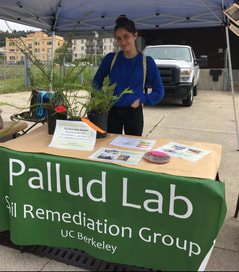 My intern Marina Rowen staffs our table during the Cal Day Oxford Tract Open House, April 22, 2017. My intern Marina Rowen staffs our table during the Cal Day Oxford Tract Open House, April 22, 2017. Community outreach: I had fun reflecting on my experiences through blog posts here, and was featured on a Berkeley Food Initiative podcast along with Josh talking about our work with Urban Tilth. Josh and I also worked with other students to organize an open house at our on-campus agricultural research facility during Cal Day, where I tabled and shared my research with neighbors and prospective students. I also was active on campus, organizing a Faculty Curriculum Sustainability Workshop for Berkeley faculty to work on incorporating sustainability concepts into their course materials. (It was fascinating watching faculty from Art History to Engineering debate what sustainability “really” is). I also taught a Sustainable Soils Research Incubator, providing a diverse cohort of 7 undergraduate students hands-on learning in plant-based soil remediation methods. Participants are already seeing the fruits of their involvement, with one member earning best poster in a research poster competition, and 2 others applying for summer internships based on what they learned in the Incubator. Finally, in collaboration with the local agricultural extension office here, my intern Weihan Zhang, Joshua Arnold, and I gave a presentation to extension personnel from Henan Province, China. They were very interested in arsenic phytoextraction! Overall, I’m thankful for an exciting, successful year. A big thank you to all my collaborators, interns, friends and family, the Botany in Action program, and my adviser Céline Pallud! I look forward to the coming year of evidence-based inquiry and community engagement.
In just 1 week over Winter Break, the hoop houses in my Richmond, CA arsenic phytoextraction field study went from being a sea of fern fronds to empty. In this photo essay, I show the harvest process, complete with a surprise holiday visitor. On the evening of October 7, 2017, the winds were eerily warm in the San Francisco Bay Area. Strong gusts blew through the region. I felt like something was wrong as I went out for an evening jog. And indeed, overnight, powerlines blew down, sparking wildfires in the hills around the North Bay cities like Santa Rosa. Flames spread rapidly in the high winds and dry vegetation.
Fires have long been a part of the California oak savannah and chaparral. In a Mediterranean climate, vegetation dries out over long hot rain-free summers, ready to burn to control undergrowth and release seeds from fire-adapted plants before winter rains return. Indigenous cultures on the West Coast (and beyond) possess sophisticated fire ecology practices. Historically, tribes worked with regular burn cycles to sustain ecological resources and produce items edible, medicinal, and sacred, practices that continue today where possible. Even since European colonization and forced removal of Native peoples from their land, fire is no stranger to California. But without regular burning, fuel builds up resulting in more intense blazes that damage ecosystems and human infrastructure and kill people. In the North Bay, suburbanization over the last 2-3 decades has lead people to move deeper in the hills around old agricultural towns of Santa Rosa, Petaluma, and Calistoga. This type of development increases the loss from fires that have historically been a natural part of the ecosystem. The October fire was special for several reasons. Following a 6-year long drought, heavy winter rains over the 2016-2017 winter led to high vegetation growth rates, so as biomass dried out in the summer, there was a lot of fuel to ready to burn. Also, wind patterns shifted to blow from the east, bringing warm, dry air from the Nevada deserts (known as the Diablo winds), in contrast to the moist, cooler ocean air we usually receive. These factors led fires to catastrophically burn not only hillier areas of the North Bay but also flatland industrial properties and residential neighborhoods very close to city centers. With all this combustion came plumes of thick smoke that limited visibility in the Bay Area, sent air quality indicators into the red, and caused respiratory problems. The question weighing on many people’s minds was: what is in the smoke? When things burn, carbon dioxide and water vapor are released, but so are many other chemicals, including polycyclic aromatic hydrocarbons (PAHs), metals, and dioxins. Farmers in particular had a lot of questions. The North Bay is an agricultural area, home to Wine Country but also plenty of vegetable crop producers, historic apple orchards, and community and backyard gardens. If their land had burned, could they grow on it? If their produced had not burned, was it contaminated by smoke particles falling from the sky? Did the smoke fallout contaminate their soil? I talked with Vanessa Raditz, a friend who is now using her Master’s in Public Health to organize a community science initiative in pursuit of answers. She said that in the days after the fire, growers really needed information but the information out there was limited, and agricultural extension personnel were at a loss. Working with the Cooperative Extension, she organized volunteers to collect produce samples from farms impacted by the fires, to assess the chemical make-up of the smoke particle fallout and determine if the produce is safe to eat. The results won’t be available in time to help farmers this time around, but will help answer questions for future fires. 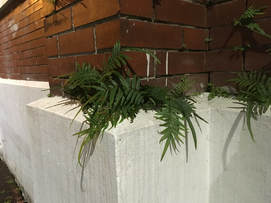 Pteris vittata growing on the walls of a church at E. Palm and N. Florida, Tampa, FL. Pteris vittata growing on the walls of a church at E. Palm and N. Florida, Tampa, FL. I got into Tampa recently to attend a conference and took a cab to my accommodations. As we rounded the corner approaching the house, I saw something really exciting out of the corner of my eye – plants, growing out of the brickwork in the wall of an old church. And not just any plant, but yes, it was – Pteris vittata, the very fern I work with! The star of the arsenic remediation show, native to the eastern half of China, now widely distributed in tropical and subtropical regions worldwide. And growing in walls, stonework, toxic waste sites, and other inhospitable habitats in Florida. The fern’s ability to thrive outside of its native habitat, without human help to reproduce, has earned it a Category II listing on Florida Exotic Pest Plant Council's 2017 List of Florida's Most Invasive Species. Category II, take note, means P. vittata can potentially disrupt native plant communities but is not currently doing so. And since it is not currently doing so, we might call it a naturalized plant (reproducing without human help, but not becoming a member of the local plant community), instead of invasive. As soon as it is found disrupting native plant communities, it moves up to a Category I invasive plant. It’s worth considering whether P. vittata is invasive or simply naturalized. Perhaps P. vittata developed it’s arsenic hyperaccumulation ability so it could outcompete other plants in these marginal habitats, potentially implying that it was not very competitive in less marginal, more hospitable areas. Indeed, we exploit this competitiveness in high-arsenic soils – certainly marginal habitat – when we use the fern for arsenic phytoextraction. We want the plant to thrive in our remediation project, but not reproduce successfully in the surrounding ecosystem. While there aren’t a lot of phytoremediation field studies investigating how the fern behaves (and reproduces) outside of controlled greenhouse conditions, a field study in Florida didn’t find any young P. vittata ferns reproducing outside of the study area—a good thing. In my field studies, in a Mediterranean climate far different than humid Florida, I don’t find any ferns reproducing either. And it’s not for lack of spores – the fern produces so many spores we have to wear dust masks when working around them. The spores seem to require very specific humid, warm conditions to germinate, which we don’t have here in the Bay Area outside of greenhouses. What happens when we use truly invasive plants for phytoremediation? Well, they invade local plant communities – something we don’t want to happen. For example, following some careful research with Oregon scientists, a phytomining company set up a venture using the nickel hyperaccumulator Alyssum murale to pull nickel out of serpentine soils in the Kalmiopsis region of southern Oregon. The Kalmiopsis is famous for its endemic plant communities suited to the tough serpentine environment, and in fact many hyperacumulators have evolved on serpentine soils, naturally high in metals. However, Alyssum murale was not native to the Kalmiopsis. Even though the company was initially very responsible when collaborating with the scientists, they were less conscientious about harvesting the Brassica before it went to seed once they were working on their own. The highly invasive plant spread like a lightning fire at the end of a long dry western summer, and the phytomining company pulled out and ran, leaving a botanical mess. Now, helicopters buzz the area looking for stands of the brushy yellow flowering plant – although locals worry the copters are searching for another nonnative flowering plant commonly found in northern California! 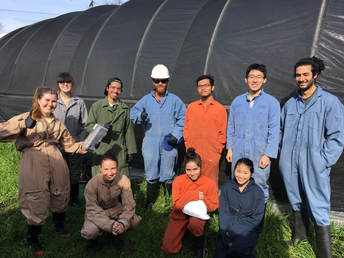 Spring 2017 Field Team Spring 2017 Field Team I didn’t expect to become a personnel manager in graduate school. Independent by nature, I pictured myself as a solo actor, laboring alone in the lab till odd hours producing results. Little did I know – I was very wrong about working solo! In the last 4+ years I’ve worked with over 50 undergraduate student interns on my research project. I am firmly a middle manager within the well-oiled academic hierarchy. Having priced themselves out of the fun (they might say tedium), our advisers are rarely in the lab and field. Instead they rely on us graduate students to manage our research projects and conduct the research tasks. As we work, we learn, and in turn eventually “price” ourselves out of the more routine tasks in research, like processing samples. I rely on interns to complete this work. In turn, these more accessible tasks are a valuable way for interns to gain practical research skills and engage with the research process beyond any experience they get in courses. Just like my adviser relies on me, I am completely reliant on my interns. They are essential member of our research team; there’s simply too much work for one person. Perhaps more importantly, I am sharing the research experience with future scientists. As an undergraduate, I conducted my senior thesis at Lawrence Livermore National Laboratory through a research internship program. This was a profoundly formative experience for me, and I want to pass this type of experience on to other budding scientists. In selecting the highest quality applicants, I consistently end up with interns who are members of groups underrepresented in science, technology, engineering, and math (STEM) fields. A former woman of color mentee told me she found a safe place in our lab to explore science within the larger UC Berkeley campus. As a white, queer male, it meant a lot to me to hear that. On a day to day level, working with interns is a great experience for me. It gives structure to my research as I plan tasks and estimate time for completion. It’s also my responsibility to give them context for their work. In the midst of prepping hundreds of samples, it can be easy to forget that each sample becomes a data point that will be interpreted to prove or disprove our hypotheses. Once an experiment is designed and underway, the results are only as good as the samples. I recently had an intern who collected samples in the field and then, instead of delivering them to the lab fridge immediately afterwards as instructed, took them to class and then home with him. I let him go. I’ve had other funny instances too. I once had an intern who loved to sing, very loudly in Chinese, as he watered the plants at my field site. That field site is in a residential neighborhood, and I wonder how the neighbors felt about the entertainment. A wonderful intern who still works for me, usually in the lab, came out to the field site to sample one afternoon, and I learned she has a great dislike of frogs. Unfortunately for her, our field site greenhouse is inhabited by the Pacific Chorus Frog (see July blog post). She stated that she was able to get used to all the spiders in our other greenhouse, but drew the line at frogs and would be happier in the lab. My interns no doubt have had funny instances with me, too. They are very patient if I forget to send them something while out at a conference or in the field. Sometimes we work on such a tight schedule that the dishes pile up and I have them wash dishes for 4 hours – only to turn around and get them dirty again. Washing dishes in a lab is a crucial skill, so I don’t hesitate to ask interns to help out. Just like the quality of the results is limited by the quality of the samples, the quality of all work in the lab is limited by the cleanliness of the glassware. We prioritize washing and reusing materials like syringes and large pipette tips, as a part of our Green Labs Certification. This means we use water and labor in order to produce less solid waste and consume less plastic. Is this worth it? Along with asking a sustainability expert, ask the interns. Some of my interns have gone on to work in related environmental fields. Two former interns work at oil companies, and I like to think they bring the sustainability principles we practiced in our research to these extractive industries. I’ve had several pre-med students who felt lab experience, even in a soils lab, would strengthen their med school applications. (There’s more overlap than you might think – syringes, delicate tweezers, sterile environments.) We’re now starting an enhanced internship program, the Sustainable Soils Research Incubator, with a grant from the Berkeley Collegium to narrow the gap between teaching and research here at Berkeley. Judging from the high demand on the part of the students, these internship programs work as well for the interns as they do for me and my adviser. Thank you, interns! I couldn't do it without you! |
AuthorSarick Matzen completed his PhD in Environmental Science, Policy, and Management department at University of California, Berkeley in 2020. He is now a postdoc in the Soil, Water, and Climate Department at the University of Minnesota working on iron cycling in marine systems. Archives
July 2019
Categories |
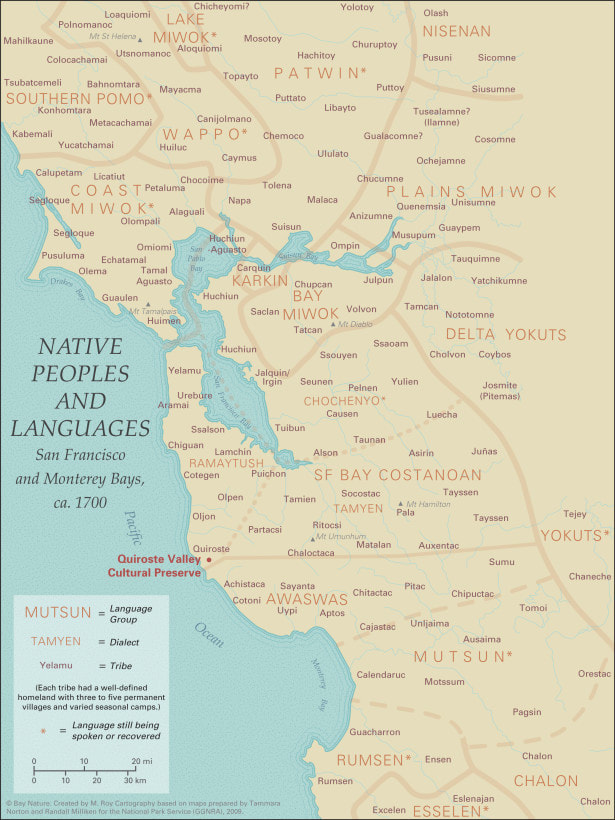
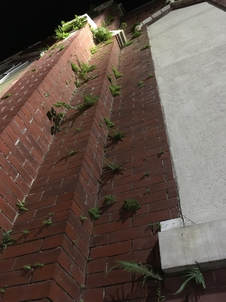
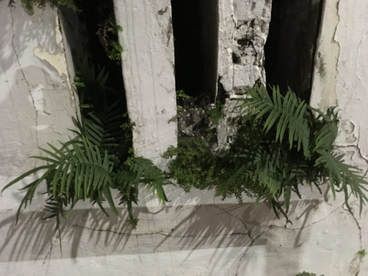
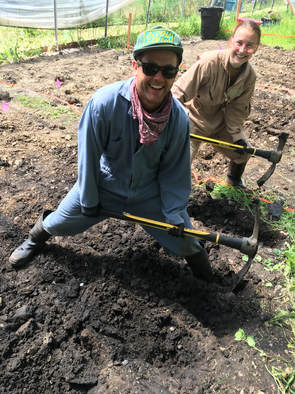
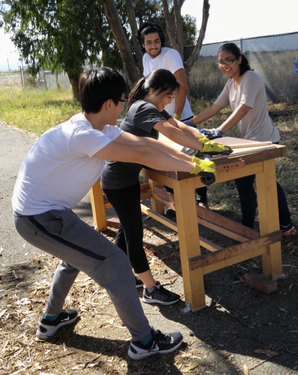
 RSS Feed
RSS Feed
